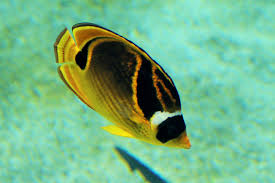
Rosa gallica, like any other plant, is susceptible to various diseases and pests that can affect its health and vitality. In this comprehensive guide, we will explore the common diseases and pests that often afflict Rosa gallica, along with effective strategies for prevention and control.
#### Common Diseases
##### 1. Powdery Mildew
**Symptoms:** Powdery mildew appears as a white, powdery coating on the leaves, stems, and buds of Rosa gallica. Infected plant parts may become distorted or stunted, and severe infections can lead to leaf drop and reduced flowering.
**Prevention and Control:** To prevent powdery mildew, ensure proper air circulation around the plant by pruning overcrowded branches. Avoid overhead watering, as damp conditions promote fungal growth. Apply fungicides labeled for powdery mildew control at the first sign of infection, following the manufacturer’s instructions carefully.
##### 2. Black Spot
**Symptoms:** Black spot manifests as dark, irregular spots on the leaves of Rosa gallica, often surrounded by a yellow halo. Severe infections can cause premature leaf drop and weaken the plant over time.
**Prevention and Control:** Practice good garden hygiene by removing and disposing of infected leaves and debris promptly. Water the plant at the base to keep foliage dry and reduce humidity levels. Apply fungicides labeled for black spot control preventatively, especially during periods of wet weather.
##### 3. Rust
**Symptoms:** Rust appears as orange or brown pustules on the undersides of Rosa gallica leaves, accompanied by yellow or orange spots on the upper leaf surface. Severe infections can cause leaf distortion and premature defoliation.
**Prevention and Control:** Remove and destroy infected leaves to prevent the spread of rust spores. Avoid overhead watering and provide adequate spacing between plants to improve air circulation. Apply fungicides labeled for rust control as a preventive measure, particularly during periods of high humidity.
#### Common Pests
##### 1. Aphids
**Symptoms:** Aphids are small, soft-bodied insects that feed on the sap of Rosa gallica, causing leaves to curl, yellow, and distort. They may also excrete honeydew, leading to sooty mold growth on plant surfaces.
**Prevention and Control:** Encourage natural predators like ladybugs and lacewings to control aphid populations. Rinse plants with a strong stream of water to dislodge aphids from foliage. Apply insecticidal soap or neem oil to affected plants as a targeted treatment.
##### 2. Thrips
**Symptoms:** Thrips are tiny, slender insects that feed on Rosa gallica leaves, causing silvering or stippling of foliage. Heavy infestations can lead to distorted growth and reduced plant vigor.
**Prevention and Control:** Remove and destroy infested plant material to prevent thrips from spreading. Use yellow sticky traps to monitor and capture adult thrips. Apply insecticidal soap or horticultural oil to control thrips populations effectively.
##### 3. Rose Slugs
**Symptoms:** Rose slugs are the larvae of sawflies that feed on the undersides of Rosa gallica leaves, creating skeletonized foliage. Severe infestations can defoliate the plant and weaken its overall health.
**Prevention and Control:** Handpick rose slug larvae from affected leaves and dispose of them in soapy water. Apply insecticides labeled for sawfly control as a targeted treatment, focusing on the undersides of leaves where larvae feed.
#### Conclusion
Understanding the common diseases and pests that affect Rosa gallica is essential for maintaining the health and beauty of your plants. By implementing preventive measures and timely interventions, you can minimize the impact of diseases and pests on Rosa gallica and ensure its continued growth and vitality. In the next part of this guide, we will further explore advanced strategies for disease and pest management, including organic and integrated pest management techniques, to help you protect your Rosa gallica effectively.
### Common Diseases and Pests on Rosa Gallica: Identifying and Preventing Common Diseases and Pests (Part 2)
Continuing our exploration of the common diseases and pests that often afflict Rosa gallica, we delve deeper into effective strategies for prevention and control, empowering gardeners with the knowledge to safeguard their beloved roses.
#### Advanced Strategies for Disease Management
##### 1. Cultural Practices
**Proper Planting:** Plant Rosa gallica in well-drained soil with adequate sunlight to promote healthy growth and reduce the risk of disease. Avoid overcrowding plants to improve air circulation and minimize humidity levels, which can contribute to fungal infections.
**Watering Practices:** Water Rosa gallica at the base to keep foliage dry and reduce the risk of fungal diseases like powdery mildew and black spot. Avoid overhead watering, especially during humid weather, as damp conditions create an ideal environment for disease development.
**Pruning Techniques:** Prune Rosa gallica regularly to remove dead or diseased wood and improve air circulation within the plant canopy. Disinfect pruning tools between cuts to prevent the spread of pathogens between plants.
#### Integrated Pest Management (IPM) Strategies
##### 1. Beneficial Insects
**Ladybugs:** Release ladybugs in the garden to feed on aphids and other soft-bodied insects that prey on Rosa gallica. These voracious predators can help control pest populations naturally, reducing the need for chemical insecticides.
**Parasitic Wasps:** Encourage parasitic wasps, such as Aphidius colemani and Trichogramma species, to parasitize aphids and other pest insects on Rosa gallica. These beneficial insects can help keep pest populations in check without harming beneficial pollinators.
##### 2. Cultural Controls
**Companion Planting:** Plant companion plants like garlic, chives, and marigolds near Rosa gallica to deter common pests like aphids and thrips. These aromatic plants release natural compounds that repel pests, reducing the likelihood of infestation.
**Mulching:** Apply a layer of organic mulch around Rosa gallica to suppress weed growth, retain soil moisture, and prevent soil-borne diseases. Use organic materials like shredded bark or compost to provide a protective barrier around the plant roots.
#### Organic Remedies
##### 1. Neem Oil
**Application:** Apply neem oil to Rosa gallica as a foliar spray to control aphids, thrips, and other soft-bodied insects. Neem oil works by disrupting the growth and development of insect pests, reducing their population over time.
**Frequency:** Apply neem oil every 7-14 days, depending on the severity of pest infestations and environmental conditions. Be sure to cover all plant surfaces thoroughly, including the undersides of leaves where pests may hide.
##### 2. Garlic Spray
**Preparation:** Prepare a garlic spray by steeping crushed garlic cloves in water for several hours or overnight. Strain the mixture and dilute it with water before spraying it on Rosa gallica to repel aphids, thrips, and other pest insects.
**Application:** Apply garlic spray as a foliar treatment to Rosa gallica, focusing on areas where pest activity is observed. Reapply the spray every 7-10 days, especially after rainfall or irrigation, to maintain its effectiveness as a pest deterrent.
#### Conclusion
By implementing advanced strategies for disease and pest management, gardeners can effectively protect Rosa gallica from common threats while minimizing the use of chemical pesticides. From cultural practices and integrated pest management techniques to organic remedies and botanical deterrents, there are many options available to safeguard the health and vitality of Rosa gallica in the garden. By combining these approaches with regular monitoring and proactive intervention, gardeners can create a thriving environment for Rosa gallica to flourish and bloom with beauty for years to come.










